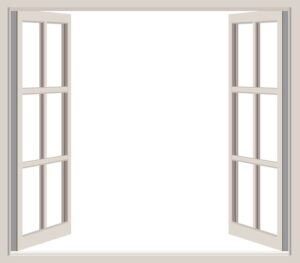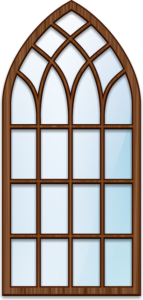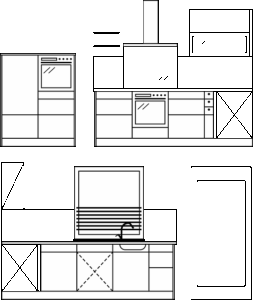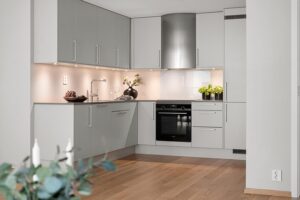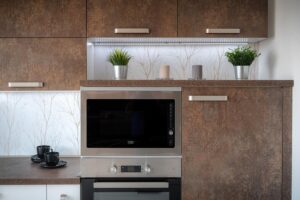Optimizing Home Comfort: A Guide to Custom Window Installation Plans
A customized window installation is a tailored solution that optimizes both energy efficiency and a…….

A customized window installation is a tailored solution that optimizes both energy efficiency and a building's visual appeal. This process involves a detailed analysis of the structure's design, intended use, and environmental factors to select appropriate window types, materials, and configurations. Advanced CAD software is used for precise measurements and simulations to ensure windows fit perfectly and perform optimally. Expert installers guide homeowners through selecting from various glass options, frame materials like wood, composites, or aluminum, ensuring the windows complement the property's architectural style and are durable over time. Factors such as acoustic and thermal performance, energy-efficient glazing, and window styles are considered to enhance comfort and minimize environmental impact. Customized windows can significantly boost natural light penetration and address privacy concerns with obscured glass options. For areas requiring effective ventilation, casement or awning windows may be more suitable than traditional double-hung windows. The entire process from consultation to inspection is designed to meet the highest performance and longevity standards, ultimately enhancing the comfort, efficiency, and aesthetic appeal of any home environment. When choosing customized windows, consider the impact of window dimensions, material selection, climate, and budget on both cost and design, ensuring that the final product aligns with your home's architecture and functional needs.
When considering enhancements for your home, customized window installation emerges as a transformative choice. This article delves into the nuances of tailored window solutions, guiding you through an overview of their benefits, the assessment of your home’s unique requirements, the detailed fabrication process, and pivotal factors influencing design and cost. Moreover, we explore how these bespoke installations can significantly boost energy efficiency while elevating your home’s aesthetic appeal. Join us as we illuminate the path to windows that are crafted to fit both your vision and your living space perfectly.
- Understanding Customized Window Installation: An Overview
- Assessing Your Home's Needs for Tailored Window Solutions
- The Step-by-Step Process of Custom Window Fabrication
- Factors Influencing the Cost and Design of Custom Windows
- Enhancing Energy Efficiency and Aesthetics with Custom Window Installations
Understanding Customized Window Installation: An Overview
Customized window installation plans are meticulously tailored to fit the unique architectural and functional needs of a structure, ensuring optimal performance and aesthetic appeal. These plans begin with a thorough assessment of the building’s design, the intended purpose of the windows, and the specific environmental conditions they will encounter. Factors such as climate, sun path, and energy efficiency goals are carefully considered to select the ideal window types, materials, and configurations. Advanced tools like computer-aided design (CAD) software facilitate precise measurements and simulations, allowing for detailed customization that accommodates complex architectural elements or specific homeowner preferences. This bespoke approach not only enhances the overall look of a property but also contributes to its energy efficiency and comfort, as each window is crafted to fit seamlessly into its environment, providing natural light and ventilation where needed most.
Professional window installers who specialize in customized plans bring a wealth of expertise to the project, guiding homeowners through the selection process and ensuring that every aspect of the installation aligns with the chosen design. From the choice of glass types that offer acoustic or thermal insulation properties to the selection of frame materials that range from traditional wood to modern composite or aluminum options, each decision is made with the goal of meeting the homeowner’s specific needs and preferences. The end result is a window installation that not only complements the home’s style but also stands up to the test of time, both in terms of its functionality and its visual impact.
Assessing Your Home's Needs for Tailored Window Solutions
When considering a customized window installation plan, it’s crucial to assess your home’s specific needs and characteristics. This begins with understanding the existing windows’ condition, size, orientation, and the role they play in your home’s energy efficiency and overall aesthetics. A thorough evaluation of your home’s architectural style and the surrounding environment is necessary to select windows that complement both the interior design and the neighborhood’s visual harmony. Additionally, consider the climate in which you live; the right window design can significantly enhance thermal performance, reducing heating and cooling costs. Energy-efficient glazing options, frame materials like vinyl or wood, and appropriate window styles are all factors to consider for maximizing comfort and reducing your environmental impact. By carefully analyzing these elements, homeowners can ensure that their new windows will not only be an attractive addition but also a functional upgrade tailored to their home’s unique requirements.
In the process of customizing window solutions, homeowners should also think about the functionality they need from their windows. This includes aspects like ease of operation, privacy levels, natural light optimization, and ventilation. For instance, if your home receives limited sunlight, you might prioritize large windows with high-performance glazing to maximize daylight. If privacy is a concern in certain rooms, consider opaque or obscured glass options. Moreover, for areas where cross-ventilation is beneficial, casement or awning windows might be more suitable than traditional double-hung models. By combining these functional considerations with the right materials and designs, your customized window installation will be not just a visual enhancement but also a practical solution that addresses your home’s specific needs and preferences.
The Step-by-Step Process of Custom Window Fabrication
In the realm of home renovation and construction, customized window installation plans play a pivotal role in optimizing natural light, enhancing energy efficiency, and complementing architectural designs. The fabrication of these bespoke windows is a meticulous process that begins with a detailed consultation between the client and the window manufacturer to understand specific requirements, desired aesthetics, and functional preferences. This initial phase sets the stage for subsequent steps, which include precise measurements, material selection, design customization, and the utilization of advanced manufacturing techniques to ensure each window is crafted to fit perfectly within its intended space.
The actual fabrication process involves a series of steps executed by skilled artisans and modern machinery. It commences with the procurement of high-quality materials, which may range from wood and vinyl to more sustainable options like aluminum or fiberglass. These materials are then cut and shaped into frames and sashes according to the specifications. Next, glazing experts fit the chosen glass, which can be single, double, or triple pane, each offering different levels of insulation and noise reduction. Throughout this process, quality control checks are conducted to confirm adherence to both industry standards and client-specific demands. The finished windows undergo a final inspection before being prepared for installation, ensuring they meet the highest standards of performance and durability. This comprehensive approach to custom window fabrication ensures that each window is not only tailored to its environment but also contributes to the overall comfort, efficiency, and beauty of the home.
Factors Influencing the Cost and Design of Custom Windows
When embarking on a project that involves customized window installation, several factors come into play that influence both the cost and design of the windows. The size and dimensions of the openings where the windows will be installed are primary determinants of cost. Larger or more complex shapes can drive up expenses due to specialized manufacturing processes and unique hardware requirements. The material chosen for the window frames, such as wood, vinyl, fiberglass, or aluminum, also affects the overall cost. Each material offers different aesthetic qualities, durability, and energy efficiency, which in turn impacts the design.
The climate of the region where the windows will be installed is another critical factor. Windows designed for areas with extreme temperatures, like the desert Southwest or the arctic Northwest, must incorporate advanced glazing options to maximize energy efficiency and reduce heating and cooling costs. Additionally, the level of customization in terms of features like double or triple panes, low-E coatings, argon gas fills, and the integration of smart home technology can significantly influence both the cost and design of the windows. Homeowners must balance their budget with their desired energy efficiency and the aesthetic they wish to achieve, ensuring that the end product not only complements the architecture but also meets functional needs for years to come.
Enhancing Energy Efficiency and Aesthetics with Custom Window Installations
Customized window installation plans play a pivotal role in enhancing both energy efficiency and aesthetics within residential and commercial buildings. By carefully considering the architectural style, regional climate, and occupant preferences, these installations can significantly reduce energy consumption while simultaneously elevating the visual appeal of any space. The integration of advanced window technologies, such as double or triple-pane glasses, argon gas filling, and high-performance coatings, helps to regulate indoor temperatures and minimize heat transfer. This not only leads to a more comfortable living environment but also contributes to lower utility bills by reducing the strain on heating and cooling systems during extreme weather conditions.
Moreover, custom windows are tailored to fit the unique dimensions of each opening, ensuring an airtight seal that deters air leaks. This attention to detail in window fabrication and installation can drastically improve thermal performance and acoustic comfort. Aesthetically, these custom solutions offer a wide array of design options, from traditional styles with wood frames to modern looks with vinyl or aluminum clad exteriors. The choice of window materials, colors, hardware finishes, and configurations allows homeowners and designers to create a distinctive exterior facade that aligns with the building’s character while optimizing natural light and view enjoyment. The end result is a harmonious blend of functionality and beauty that stands out in any neighborhood or urban landscape.
When it comes to elevating your home’s functionality, comfort, and visual appeal, customized window installation stands out as a pivotal enhancement. This article has illuminated the multifaceted nature of this process, from meticulously assessing your home’s unique requirements to understanding the intricate steps involved in bespoke window fabrication. Homeowners can now make informed decisions about the cost and design implications of their choices, ensuring that their investment in energy-efficient and aesthetically pleasing windows is both judicious and satisfying. In conclusion, custom windows are not just a luxury but an integral aspect of modern home design, offering a tailored solution that blends form with functionality, and ultimately, enriching the living experience.
